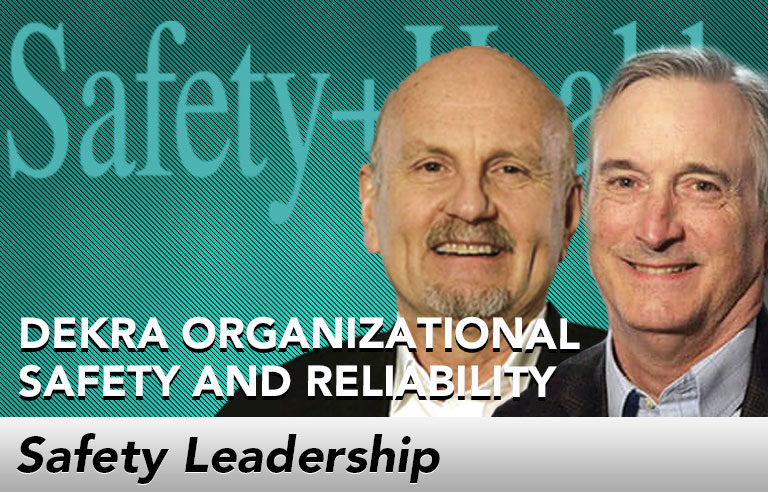Safety Leadership: Could focusing on SIF reduction be a mistake?

Editor’s Note: Achieving and sustaining an injury-free workplace demands strong leadership. In this monthly column, experts from global consulting firm DEKRA Organizational Safety and Reliability share their point of view on what leaders need to know to guide their organizations to safety excellence.
Is your company making a mistake by focusing on serious injury and fatality reduction? You might be surprised to hear us say, “Maybe.” Let us explain.
Periodically, we get calls from clients who have implemented a SIF prevention initiative and aren’t seeing the results they expected. In some cases, they experience worsening safety performance, including having more serious injuries.
When we explore what triggers the decision to focus on SIF prevention, we typically find one of three themes:
- The company’s safety professionals learned about SIF, did some homework and built a program.
- An executive leader heard about SIF, grasped the significance of the approach and directed the company’s safety team to pursue development of a SIF prevention process.
- A respected safety consultant advised the company to move in this direction to keep up with modern advances in safety management.
No matter the reason, the failure resulted from the company not appreciating that its level of organizational safety maturity may have set it up for failure.
In most cases, leaders failed to conduct meaningful discovery on the robustness of their exposure reduction methodology and level of safety maturity. This is bound to cause problems, because when the concept of exposure reduction is not understood and safety maturity is low, a change in direction can have serious unintended consequences.
When we assess the types of failure modes these companies are experiencing in their SIF prevention efforts, we see three common problems:
- Clarity regarding the acceptability of injuries was lacking.
- Resources were reassigned away from traditional safety efforts to apply to SIF, without appreciating the value these programs provide.
- Implementing the program without a comprehensive plan.
When we dig deeper to understand where these companies are in safety maturity, we typically find some or all of these shortcomings:
Low-functioning safety governance. The operational leadership’s role in safety was passive and failed to provide clear direction.
Low senior leadership accountability. The senior leaders deflected acceptance of accountability and tended to talk about the site level leaders having primary accountability.
Poor monitoring and follow-through for key initiatives. Without clear direction from the top, the corporate safety staff issued policies and procedures, but no requirement to create an implementation plan existed.
No systemic approach to controlling exposure. Much of the safety focus was chasing injury prevention rather than identifying and controlling exposures.
Misaligned priorities. The companies had typically identified safety as the No. 1 priority, but when conflict between production and safety arose, employees at the working interface reported that production consistently won.
Implementation of a well-designed SIF prevention program represents a significant change effort for any organization. Doing it right means understanding where your organizational safety maturity is and having a strategic plan for building a stronger foundation for safety maturity.
Part of this change effort must be the message that all injuries matter, and the incidents that led to them will be investigated and addressed proportionate to the level of potential.
Knowing that an effective SIF control program can yield ancillary benefits can be a compelling motivator for executives. But trying to implement such a program prematurely, and without understanding the complexity of safety maturity, can be problematic and actually do more harm than good.
This article represents the views of the author and should not be construed as a National Safety Council endorsement.
 Don Groover, CIH (retired), CSP, is senior vice president of DEKRA Organizational Safety and Reliability. Groover develops solutions that leverage the latest technology and advancements to improve safety performance in client organizations.
Don Groover, CIH (retired), CSP, is senior vice president of DEKRA Organizational Safety and Reliability. Groover develops solutions that leverage the latest technology and advancements to improve safety performance in client organizations.
 Don Martin is a safety industry veteran with more than three decades of experience in the design and implementation of environmental, health and safety management systems, risk management programs, and organizational culture change initiatives for companies worldwide.
Don Martin is a safety industry veteran with more than three decades of experience in the design and implementation of environmental, health and safety management systems, risk management programs, and organizational culture change initiatives for companies worldwide.
Direct to your inbox: Sign up to be notified in email about new "Safety Leadership" columns.
Post a comment to this article
Safety+Health welcomes comments that promote respectful dialogue. Please stay on topic. Comments that contain personal attacks, profanity or abusive language – or those aggressively promoting products or services – will be removed. We reserve the right to determine which comments violate our comment policy. (Anonymous comments are welcome; merely skip the “name” field in the comment box. An email address is required but will not be included with your comment.)

